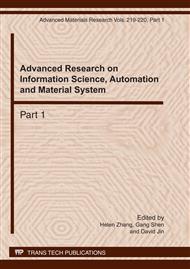p.824
p.828
p.832
p.836
p.842
p.846
p.851
p.855
p.860
The Safety and Liveness Properties of Composite E-Services Based on Activity Chain
Abstract:
E-service composition is most impressing method for development and deployment of e-business. Description and modeling the behavior requirements of composite E-services for users and verifying composite E-service compliance to specific requirements is an important step in design of services. But most work does not address the issue of how to model the requirements that the BPEL4WS processes are supposed to satisfy. The specifications in verification works are general temporal relation based on activity or scenario in essence. Distinguish with these work, we propose a novel concept of behavior specification based on activity chain in which granularity is between activity and scenario. Chain existence mode, chain absence mode are designed to express such behavioral requirements based on activity chain that is similar with safety or liveness property based on activity respectively. Encode them on Labeled Transition System LTS and then give them exact operation semantics. Finally, an example is illustrated.
Info:
Periodical:
Pages:
842-845
Citation:
Online since:
March 2011
Authors:
Price:
Сopyright:
© 2011 Trans Tech Publications Ltd. All Rights Reserved
Share:
Citation:


